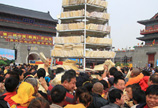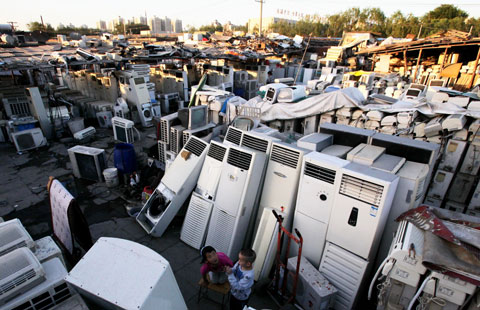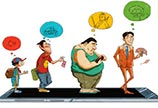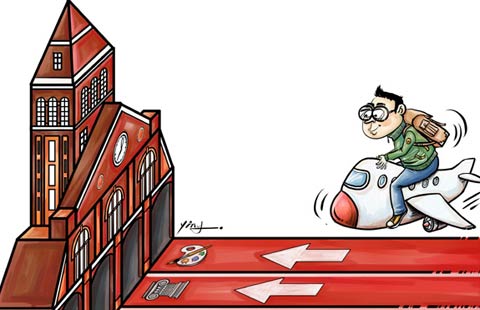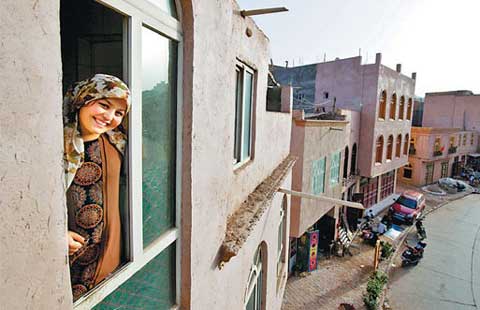Performers dance to a different tune
By Jiang Xueqing (China Daily) Updated: 2012-04-13 08:06"For modern dance in China, domestic performances mean losing money," he said.
Although audience numbers have been growing, the core figure is no more than 3,000 in large cities such as Beijing, said Tsao. "Modern dance only belongs to a small circle, no matter how hard you try to promote it," he said.
BeijingDance / LDTX sold 500 tickets when it gave a performance at the National Center for the Performing Arts and 1,200 tickets at the Haidian Theater, but the company was forced to restrict the number of performances because audience numbers are still small.
It's a classic Catch-22 situation. "Modern dance is a new type of art, so it basically has no audience. If there is no audience, the theaters do not have the courage to put on performances. But if there are no performances, how can you cultivate an audience?" asked Friedman.
The spread of dance
Although the relationship between modern dance performances, theaters and audiences in China has devolved into this vicious circle, insiders still believe the form has great potential in China.
During the past 10 years, an increasing number of freelance dancers and small, independent collectives have come to the fore. Modern dance groups have spread from the large urban centers such as Beijing, Shanghai and Guangzhou to second- and third-tier cities such as Zhengzhou in Henan province and Changde in Hunan province. Many educational establishments, including Guangxi University and Jiangxi Normal University, have established dance departments, where students use modern techniques to express their take on modern life.
From Hong Kong to the third-tier cities, modern dance is moving in lockstep with social changes in China, said Tsao. Modern dance always appears when the economy has just started to develop but the culture has not yet caught up, so a large number of artists feel depressed and need a form of self-expression. He believes modern dance is on the way up in China.
"I always tell others that, for China, modern dance is our renaissance," he said.
"Chinese culture has a lot to do with language, rather than the body. It may be that the influence of Confucianism has led us to ignore our bodies for a long time. But we also have Taoism as another source of our culture, and it pays a lot of attention to the body. Now, the people enjoy relatively more freedom than when China started on its journey after the reform and opening-up (in the 1980s). Perhaps, modern dance will become the hallmark of China's renaissance."
Gao Yanjinzi, artistic director of the Beijing Modern Dance Company, is also confident about performing modern dance and running a company in China.
"My confidence lies in one thing: China needs to know what modern art is. It's decided by our times," she said. "How can you say that China has no market for modern dance, when there are still so many people who haven't seen it yet? Indeed, China has a huge market for dance. To develop the market, we need good works and good performances."
So far, Chinese audiences have not seen truly powerful and influential works, according to Tao. Some choreographers incorporated their frustrations and the pressures of modern society in their work by making dancers scream, swing their hair and go crazy on stage. But that only cast a pall of gloom over audiences.
As a result, many dance groups and performers fell out of favor and were disbanded. Tao estimated that no more than 100 professional dancers and choreographers are left nationwide after all the years of competition.
He also noted that modern Chinese dance has not won as much international attention as has been reported by some Western media, but that it has gained coverage as a result of China's economic growth and growing global influence. Back in 2008-09, many international art festivals and foundations searched for young Chinese artists to stage performances with an anti-China theme, but Tao always turned down those offers because it was not in keeping with what he wanted to do with his art.
"Your work should move along with the times. That's the most important thing to keep in mind," he said. "An artist has to think about what is happening in his time, what changes are taking place and which position will suit him best."
- Seven villagers murdered in N China
- China steps up tobacco control efforts
- Five jailed for separatism in Xinjiang
- Letter asks for leniency in poisoning case
- Antibiotics in surface water pose 'indirect health risk'
- Tianjin airport opens up transit link to Beijing
- High levels of antibiotics in China's major rivers
- China to dig tunnel for Asian rail system
- Bering strait line to US possible, experts say
- China: Stop oil rig harassment
